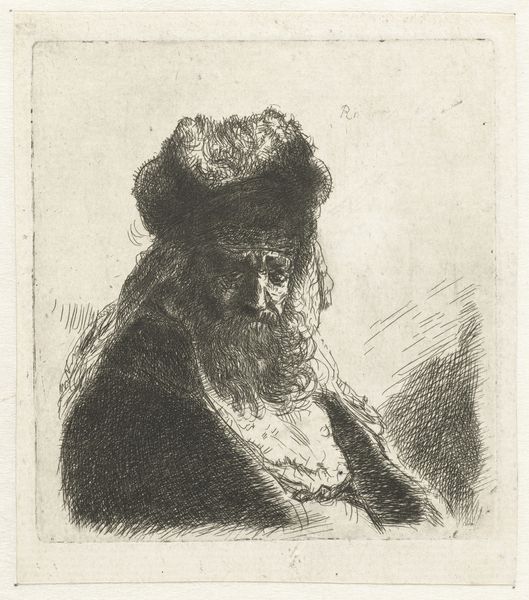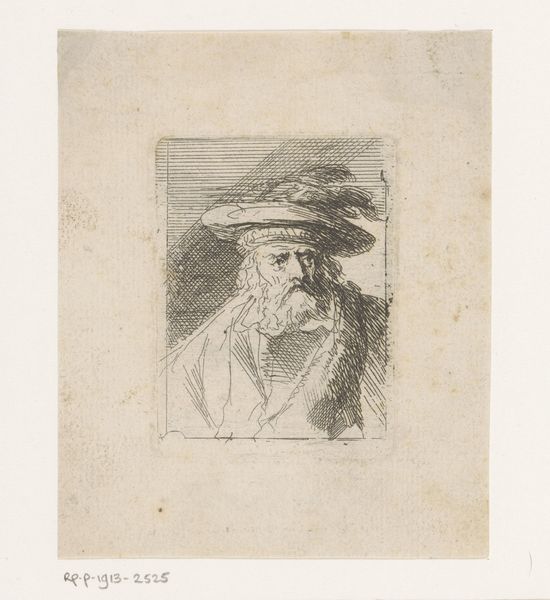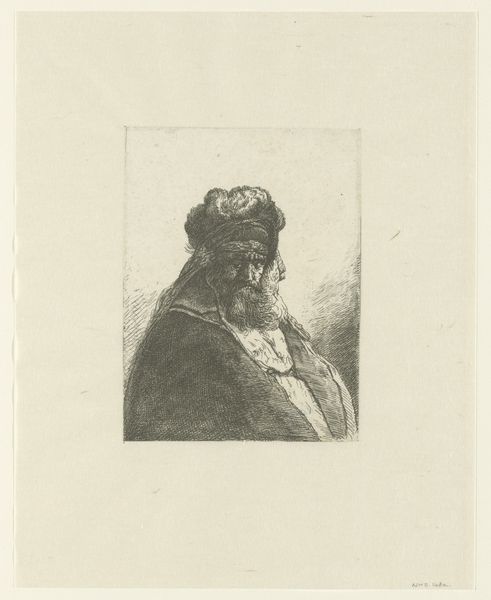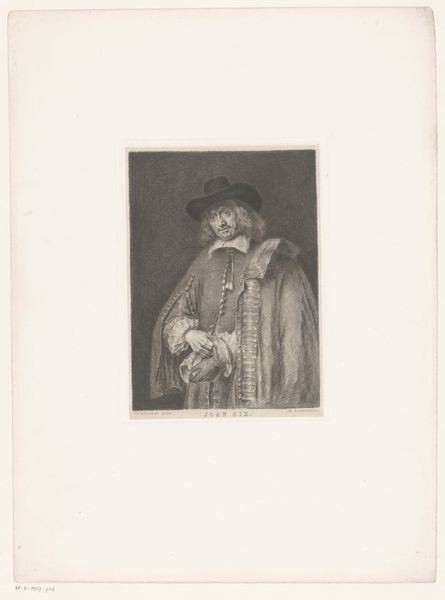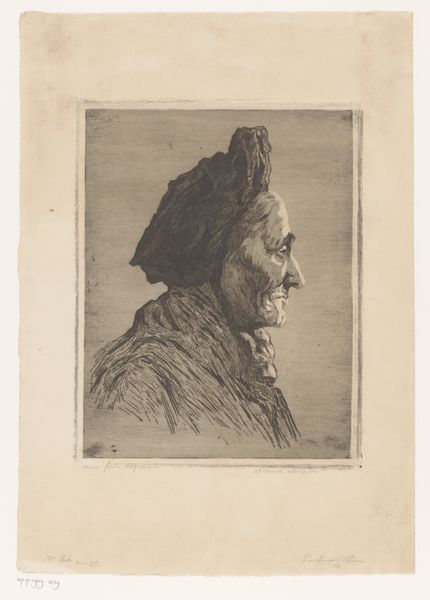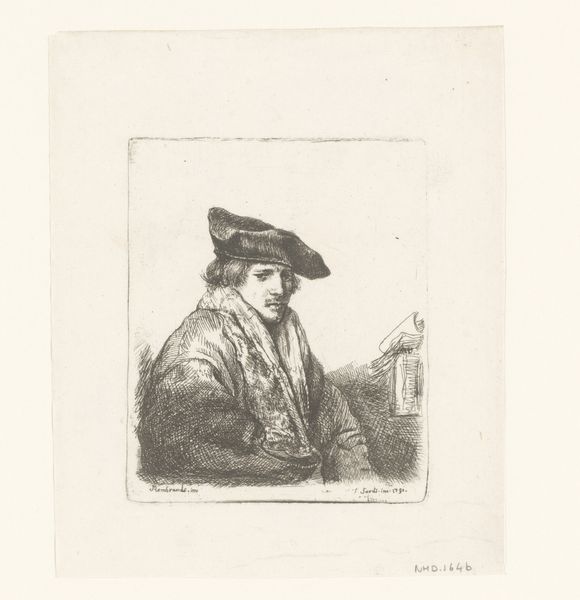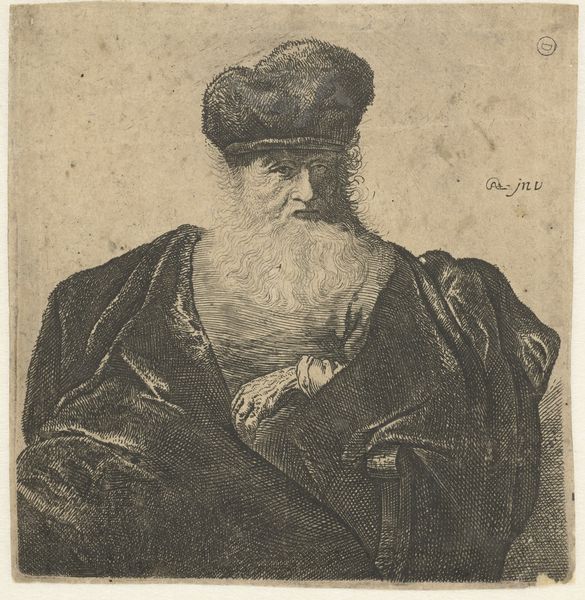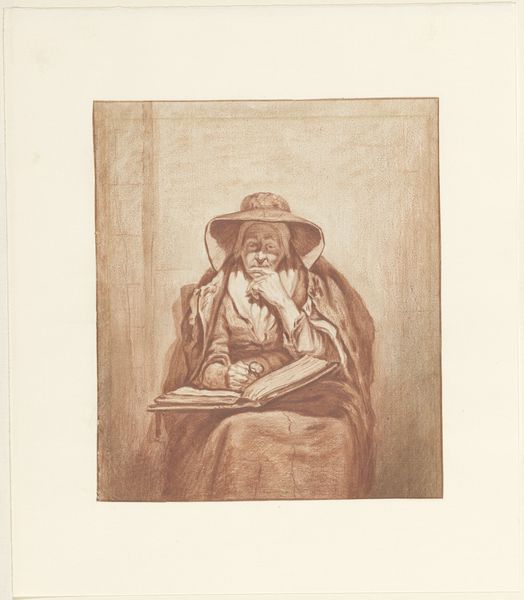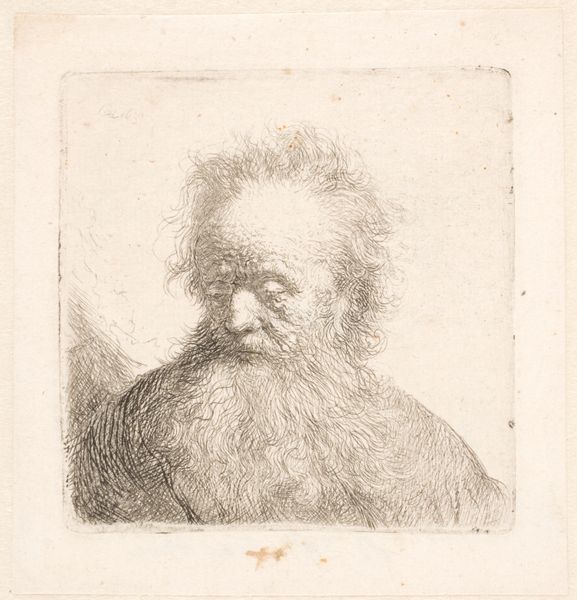
Dimensions: height 179 mm, width 179 mm
Copyright: Rijks Museum: Open Domain
Editor: Here we have Georg Leopold Hertel’s “Old man with a divided fur cap,” from 1761. It's a delicate engraving, full of intricate lines. The textures created by the artist almost makes me want to reach out and touch the soft fur. How do you approach this piece? Curator: I immediately focus on the process of engraving itself. Look closely at the lines – each one carefully etched into the plate, demanding skill and time. Consider this in the context of 18th-century printmaking: this image could have been reproduced, distributed, and consumed by a wide audience. It's no longer just about the portrait of an individual but also about the *means* by which this image circulates. Editor: So you’re saying it's not only about the *who*, but also about the *how* it reaches the viewer. But who could access such an image? Curator: Precisely. And that "how" shapes its meaning. Think about the social hierarchies implicit in art production. Who commissioned the work? Who owned the printing press? Who could afford a print like this? What does the man’s luxurious fur cap signify about consumption at the time? These details unlock further exploration of materiality and economics. The seemingly simple act of creating an image implicates complex social networks. Editor: It changes my view; I was stuck on just thinking about the sitter's possible social status based on the cap! I now realize focusing on the processes and availability surrounding its creation shows its real value. Curator: Exactly! It's a fascinating example of how art can reflect and shape its surrounding material culture.
Comments
No comments
Be the first to comment and join the conversation on the ultimate creative platform.
